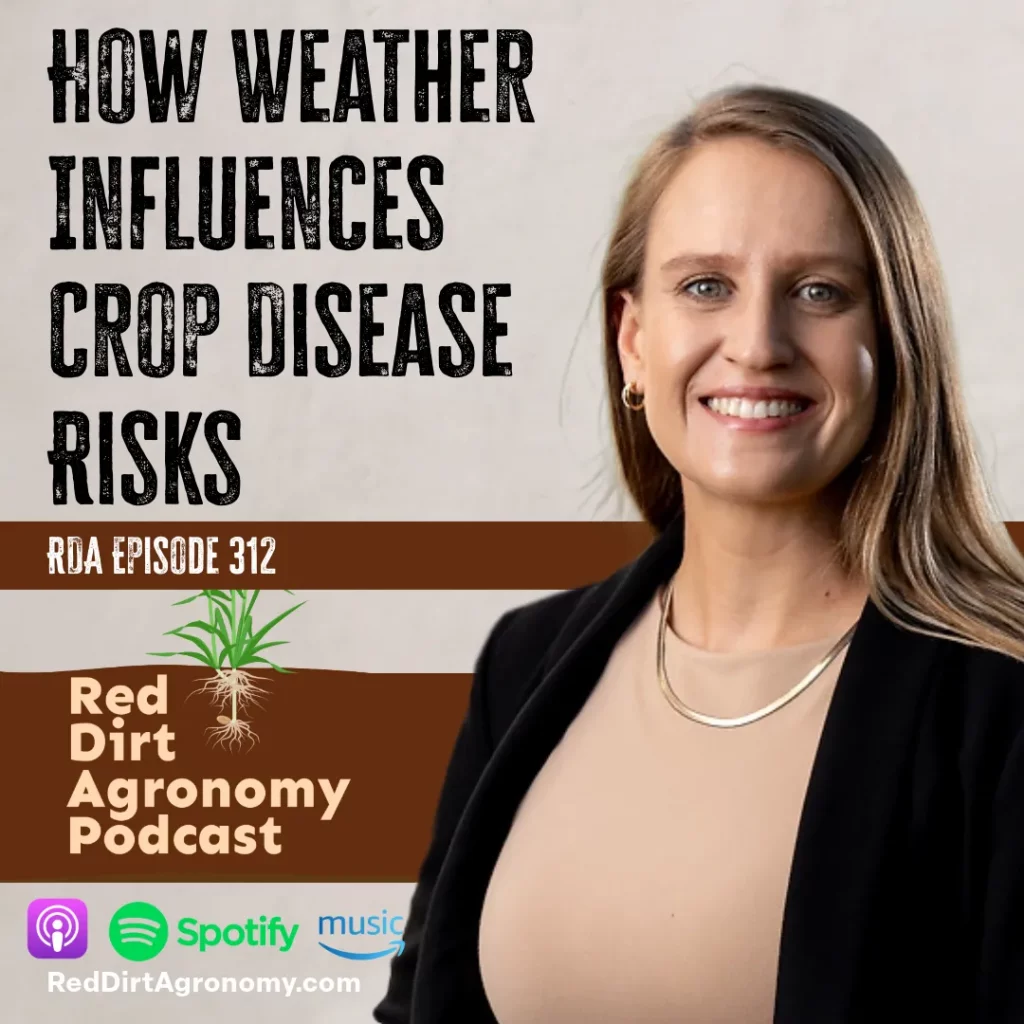
Oklahoma State University Row Crop Pathologist Dr. Maira Duffeck talks with OSU’s Red Dirt Agronomy Podcast Host Dave Deken about the significant effects of weather on crop health and management decisions.
Dr. Duffeck said that the beginning of the season was interesting due to increased rainfall and humidity. As the season progressed, however, temperatures have increased and soil moisture has decreased rapidly. A common saying among her peers is that when conditions are favorable for the development of the crop, they are also favorable for the development of their diseases, and the latter part of the season hasn’t been favorable for either.
She said that early in the season, she got reports of seedling diseases mainly in sorghum and soybeans. Fusarium and Macrophomina were the main culprits. Those two diseases are typically seen when conditions are hot and dry, but if the soil is cold and wet enough in the early season, they can be present in seedlings.
“Producers who didn’t have a seed treatment this year really felt the difference among the plots,” she said. “It really made a difference in the stands of crops that we saw.”
She said that corn fields planted in late April to May look healthy due to timely rainfall during that time, and recent conditions haven’t been favorable for foliar diseases. She added that soybeans should continue to be monitored for disease as they were planted later in the season.
“Right now, I wouldn’t recommend a fungicide application for any of those crops, but I can’t tell the future, so we need to keep our eyes open and see what the conditions are going to tell us,” she counseled.
She explained that most pathogens, such as the ones that cause Sudden Death Syndrome (SDS) or soybean charcoal rot, affect the plant when it is very young, but the symptoms don’t present until the plant’s reproductive stages. This makes determining the age at which the young plant is no longer susceptible to such diseases difficult.
While the pathogen that causes soybean charcoal rot can affect a wide range of crops, and often are seen simultaneously in soybeans and sorghum, but seems to be less so in corn in certain years. Dr. Duffeck explained this seeming phenomenon by saying, “The pathogen is there, and it is affecting the plant, but the symptoms aren’t obvious in the same way as they are in soybeans and sorghum.”
Although she has scouted fields for it, Dr. Duffeck hasn’t yet seen the pathogen that causes aflatoxins in corn; however, she has seen some ear rot caused by Fusarium in fields that have received more rain. She recommended that growers in dryer areas stay vigilant for aflatoxins, as the lack of humidity favors its development.
She went on to explain that implementing crop rotation, effective seed treatments, and diligent disease monitoring are essential for managing crop health. These strategies can significantly mitigate risks associated with disease pressures.
To hear more from her and other experts, click here to listen to the full Red Dirt Agronomy Podcast episode.

















